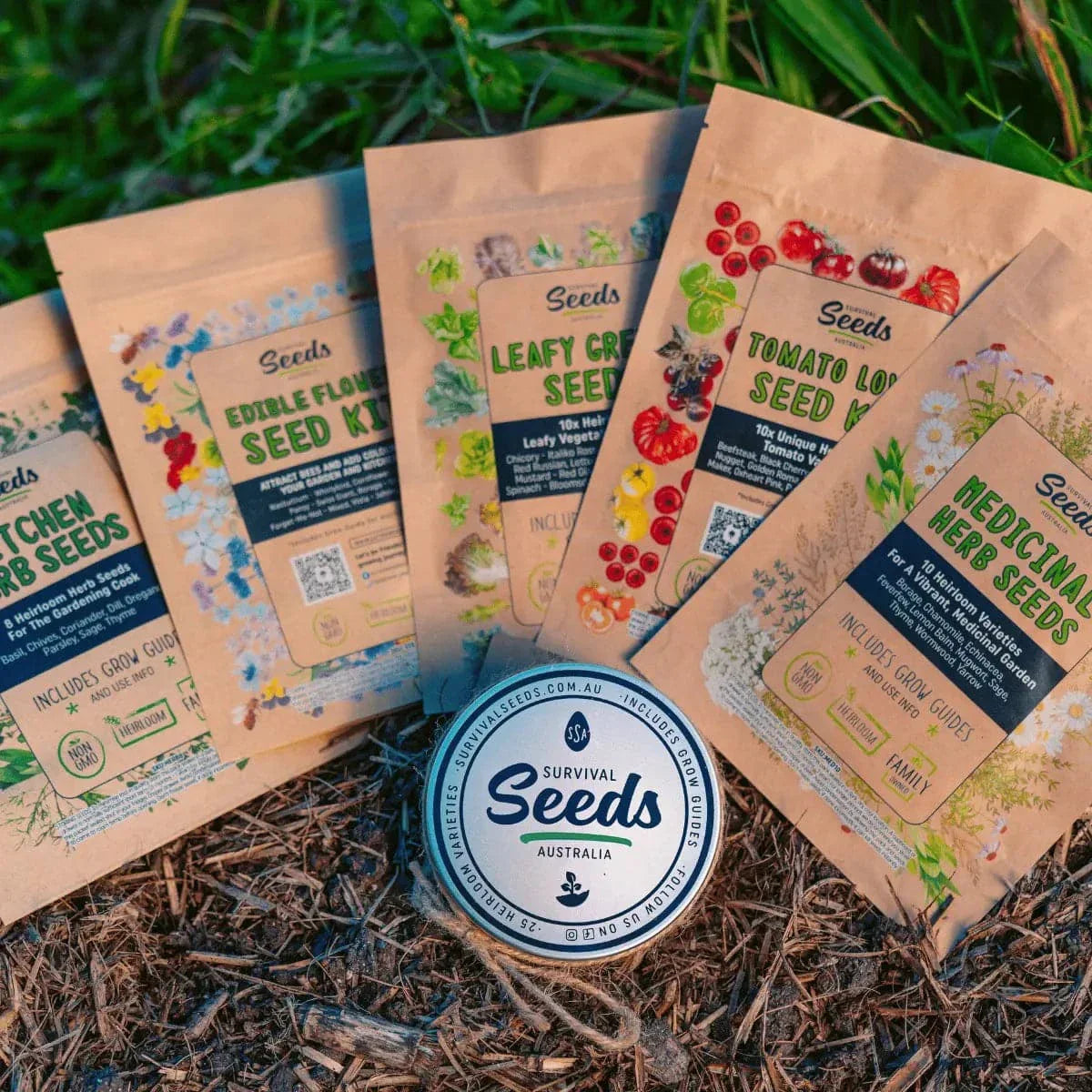Introduction
Cornflowers (Centaurea cyanus), also known as bachelor's buttons, are hardy annuals that produce vibrant, daisy-like flowers in shades of blue, pink, purple, and white. These versatile plants are easy to grow, pollinator-friendly, and perfect for wildflower meadows, borders, or pots.
Why Grow Cornflowers?
- Striking Blooms: Adds a burst of colour to gardens with their signature bright blue flowers.
- Pollinator-Friendly: Attracts bees, butterflies, and other beneficial insects.
- Low Maintenance: Thrives with minimal care and in poor soil conditions.
Overview of Cornflower Varieties
- Classic Blue Cornflower: The most popular variety, known for its intense blue petals.
- Mixed Cornflowers: Varieties that offer blooms in shades of pink, white, and purple.
- Dwarf Cornflowers: Compact varieties suited for pots or small garden spaces.
Nutritional and Environmental Benefits
- Pollinator Attractant: Provides nectar for bees, butterflies, and hoverflies.
- Cut Flowers: Long-lasting in floral arrangements, making them ideal for bouquets.
- Wildlife Support: Offers shelter and food for garden-friendly insects.
Planting Cornflowers
Best Seasons for Planting
- Temperate Regions: Sow seeds in autumn for spring blooms or in early spring for a summer display.
- Subtropical Regions: Plant in autumn to avoid the hot, humid summer months.
- Cooler Regions: Sow seeds in spring after the risk of frost has passed.
Soil Preparation and Amendments
- Soil Type: Cornflowers prefer well-draining, sandy, or loamy soil.
- pH Level: Slightly alkaline to neutral soil (pH 6.5–7.5).
- Preparation: Loosen the soil to a depth of 20 cm and incorporate compost for added fertility.
Seed Spacing and Planting Depth
- Spacing: Space seeds or seedlings 15–30 cm apart, depending on the variety.
- Depth: Sow seeds 1 cm deep, covering lightly with soil.
Caring for Cornflower Plants
Watering Schedule
- Water moderately, allowing the soil to dry slightly between waterings. Overwatering can lead to root rot.
Fertilisation and Maintenance
- Cornflowers don’t need heavy fertilisation. A light application of compost or organic fertiliser during planting is sufficient.
- Deadhead spent blooms to prolong flowering and encourage more blooms.
Managing Weeds
- Apply mulch around plants to suppress weeds and conserve soil moisture.
Pest and Disease Management
Common Pests
- Aphids: May cluster on stems and leaves, weakening the plant.
- Slugs and Snails: Can damage young seedlings.
Organic and Preventative Solutions
- Spray aphids with neem oil or a soapy water solution.
- Use slug bait or barriers like crushed eggshells around seedlings to deter slugs and snails.
Preventative Measures
- Ensure good air circulation to reduce the risk of fungal diseases like powdery mildew.
- Rotate crops annually to minimise soil-borne pests.
Companion Planting
- Good Companions: Pair cornflowers with poppies, daisies, and larkspur for a wildflower meadow look. They also work well near vegetables like tomatoes, as they attract beneficial insects.
- Avoid Planting With: Cornflowers are not particularly competitive, so avoid overcrowding them with vigorous ground covers.
How to Grow Cornflowers in Pots
- Choose the Right Pot: Use a pot at least 20 cm deep with good drainage.
- Soil Mix: Fill with a well-draining potting mix enriched with compost.
- Planting: Sow seeds directly into the pot, spacing them at least 10–15 cm apart.
- Placement: Position the pot in full sun, as cornflowers need at least 6 hours of direct sunlight daily.
- Care: Water regularly but avoid waterlogging the soil.
Harvesting Cornflowers
When to Harvest
- Flowers: Pick blooms when they are fully open for the best colour and fragrance.
- Seeds: Harvest seeds when the flower heads dry on the plant.
Harvesting Techniques
- Use sharp scissors to cut flowers at the base of their stems for use in arrangements.
- To collect seeds, allow flower heads to dry fully, then gently shake or rub the seeds free.
Uses After Harvesting
- Floral Arrangements: Cornflowers are long-lasting in vases and make excellent cut flowers.
- Edible Uses: Cornflower petals are edible and often used as garnishes or in teas.
- Seed Saving: Store harvested seeds in a cool, dry place for planting next season.
FAQs
Do cornflowers need full sun?
Yes, cornflowers thrive in full sun and may become leggy if grown in too much shade.
Can cornflowers grow in poor soil?
Yes, cornflowers are hardy and adapt well to poor, sandy, or rocky soils.
Are cornflowers edible?
Yes, cornflower petals are edible and commonly used as garnishes or in teas.
How long do cornflowers bloom?
Cornflowers typically bloom for 6–8 weeks, but deadheading can extend their flowering period.
Do cornflowers reseed themselves?
Yes, cornflowers are prolific self-seeders and often return the following year if left undisturbed.
How tall do cornflowers grow?
Most varieties grow to a height of 30–90 cm, depending on the type and growing conditions.
Can cornflowers grow in pots?
Yes, cornflowers grow well in pots as long as they receive full sun and are watered consistently.
Conclusion
Cornflowers are a low-maintenance and visually stunning addition to any Australian garden. Their versatility, pollinator benefits, and ability to thrive in a variety of conditions make them a fantastic choice for both beginner and experienced gardeners. Whether grown in garden beds or pots, cornflowers will reward you with vibrant blooms and lasting beauty.










